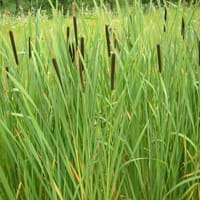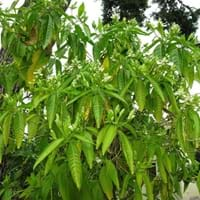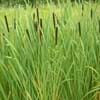Life Span
Perennial
Perennial
Type
Aquatics
Herbs, Perennial
Origin
World/Pandemic, North America, Caribbean, Europe, Northern Africa, Asia
South-Eastern Asia
Types
Not Available
Not Available
Habitat
Boggy areas, Near ponds
Semi desert, Wet forest
USDA Hardiness Zone
2-12
9-11
AHS Heat Zone
12-1
12 - 9
Sunset Zone
21,22
Not Available
Habit
Clump-Forming
Clump-Forming
Minimum Width
Not Available
Flower Color
Sienna, Chocolate
White
Flower Color Modifier
Not Available
Bicolor
Fruit Color
Not Available
Not Available
Leaf Color in Spring
Green
Dark Green
Leaf Color in Summer
Green
Green, Light Green
Leaf Color in Fall
Not Available
Dark Green
Leaf Color in Winter
Green
Dark Green
Leaf Shape
Grass like
Elliptic
Plant Season
Summer, Fall
Spring, Summer, Fall, Winter
Sunlight
Full Sun, Partial Sun
Full Sun, Partial Sun, Partial shade
Growth Rate
Fast
Very Fast
Type of Soil
Loam, Sand
Clay, Loam, Sand
The pH of Soil
Acidic, Neutral, Alkaline
Acidic, Neutral, Alkaline
Soil Drainage
Poorly Drained
Average
Bloom Time
Summer
Indeterminate
Tolerances
Wet Site
Wet Site
Where to Plant?
Container, Ground
Container, Ground
How to Plant?
Divison, Seedlings
Stem Cutting
Plant Maintenance
Medium
Medium
Watering Requirements
Does not require regular watering, Water Deeply
Average Water Needs, Needs good drainage
In Summer
Lots of watering
Lots of watering
In Spring
Moderate
Moderate
In Winter
Average Water
Average Water
Soil pH
Acidic, Neutral, Alkaline
Acidic, Neutral, Alkaline
Soil Type
Loam, Sand
Clay, Loam, Sand
Soil Drainage Capacity
Poorly Drained
Average
Sun Exposure
Full Sun, Partial Sun
Full Sun, Partial Sun, Partial shade
Pruning
Cut limbs, Remove damaged leaves, Remove dead branches, Remove dead leaves, Remove dead or diseased plant parts
Cut away fading foliage, Cut upper 1/3 section when young to enhancegrowth, Remove damaged leaves, Remove dead branches, Remove dead leaves
Fertilizers
All-Purpose Liquid Fertilizer, Apply 5-10-5 amounts, Apply N-P-K
All-Purpose Liquid Fertilizer, Don't use high pH fertilizers
Pests and Diseases
Red blotch
Aphids, Downy mildew, Dry root rot, Rust, Spider mites
Plant Tolerance
Wet Site
Heat Tolerance, Humidity
Flower Petal Number
Not Available
Single
Edible Fruit
Not Available
No
Foliage Texture
Coarse
Medium
Foliage Sheen
Matte
Matte
Attracts
Birds
Aphids, Bees, Butterflies, Snails
Allergy
Skin rash
Dizziness, Mouth itching, Vomiting
Aesthetic Uses
Ground Cover, Showy Purposes
Cottage Garden, Showy Purposes
Beauty Benefits
Not Available
Good Cleanser, Good for the Scalp
Environmental Uses
Air purification, soil stabilisation
Air purification, Insect Repellent
Medicinal Uses
anticoagulant, Astringent, Burns, Diuretic, Emmenagogue, Galactogogue, Haemostatic, Miscellany, Refrigerant, Sedative, Tonic, Vulnerary
Antipyretic, Bronchitis, Cough, Digestive disorders, Ear infections, Expectorant, Laxative, Migraines, Piles, Rheumatism, Throat infection, Treating fever
Part of Plant Used
Flowers, Leaves, Root, Seeds, Stem
Bark, Leaf Stalks, Leaves
Other Uses
Fibre, For making oil, used for weaving hats, Used in biomass, Used in paper industry, Weaving into Mats and Bags
Biomass for fuel, Can be made into a herbal tea, Culinary use, Oil is used for aromatherapy, Used as a laxative
Used As Indoor Plant
No
No
Used As Outdoor Plant
Yes
Yes
Garden Design
Dried Flower/Everlasting, Water Gardens, Wildflower
Container, Hedges, Mixed Border, Screening / Wind Break, Tropical
Botanical Name
TYPHA latifolia
Justicia adhatoda
Common Name
Broadleaf Cattail, Common Cattail
Malabar nut, Adulsa, Adhatoda, Vasaka
In Hindi
Broadleaf Cattail
अडुळसा, अडुसा
In German
Laub- Cattail
Indisches Lungenkraut
In French
broadleaf Cattail
Justicia adhatoda
In Spanish
Espadaña de hoja ancha
Justicia adhatoda
In Greek
πλατύφυλλων Cattail
Justicia adhatoda
In Portuguese
broadleaf Tifa
Justicia adhatoda
In Polish
Broadleaf Cattail
Justicia adhatoda
In Latin
broadleaf Cattail
Justicia adhatoda
Phylum
Magnoliophyta
Magnoliophyta
Class
Liliopsida
Magnoliopsida
Order
Typhales
Scrophulariales
Family
Typhaceae
Acanthaceae
Clade
Angiosperms, Commelinids, Monocots
Angiosperms, Monocots
Tribe
Not Available
Justicieae
Subfamily
Pitcairnioideae
Acanthoideae
Number of Species
Not Available
Importance of Broadleaf Cattail and Malabar nut
Want to have the most appropriate plant for your garden? You might want to know the importance of Broadleaf Cattail and Malabar nut. Basically, these two plants vary in many aspects. Compare Broadleaf Cattail and Malabar nut as they differ in many characteristics such as their life, care, benefits, facts, etc. Every gardener must at least have the slightest clue about the plants he wants to plant in his garden. Compare their benefits, which differ in many ways like facts and uses. The medicinal use of Broadleaf Cattail is anticoagulant, Astringent, Burns, Diuretic, Emmenagogue, Galactogogue, Haemostatic, Miscellany, Refrigerant, Sedative, Tonic and Vulnerary whereas of Malabar nut is Antipyretic, Bronchitis, Cough, Digestive disorders, Ear infections, Expectorant, Laxative, Migraines, Piles, Rheumatism, Throat infection and Treating fever. Broadleaf Cattail has beauty benefits as follows: Not Available while Malabar nut has beauty benefits as follows: Not Available.
Compare Facts of Broadleaf Cattail vs Malabar nut
How to choose the best garden plant for your garden depending upon its facts? Here garden plant comparison will help you to solve this query. Compare the facts of Broadleaf Cattail vs Malabar nut and know which one to choose. As garden plants have benefits and other uses, allergy is also a major drawback of plants for some people. Allergic reactions of Broadleaf Cattail are Skin rash whereas of Malabar nut have Dizziness, Mouth itching and Vomiting respectively. Having a fruit bearing plant in your garden can be a plus point of your garden. Broadleaf Cattail has showy fruits and Malabar nut has no showy fruits. Also Broadleaf Cattail is flowering and Malabar nut is not flowering . You can compare Broadleaf Cattail and Malabar nut facts and facts of other plants too.





